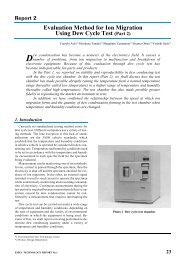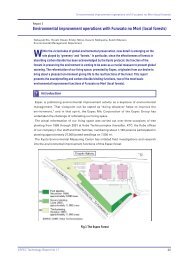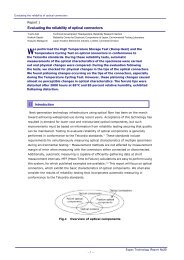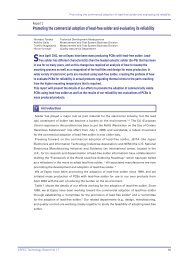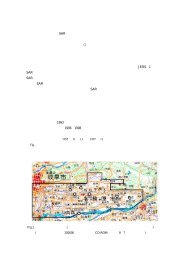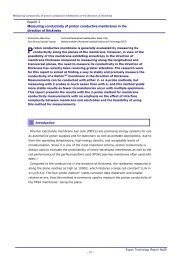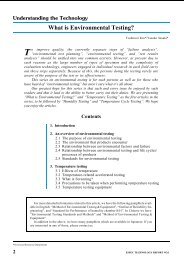download
download
download
Create successful ePaper yourself
Turn your PDF publications into a flip-book with our unique Google optimized e-Paper software.
Measuring Conductivity of Proton Conductive Membrane in the direction of thickness, partⅡ:<br />
using the 4-probe method in the direction of thickness<br />
Fig.5 showed the measurement values for Nafion117 ® pretreated at 150℃ at various pressures<br />
using the membrane plane 4-probe method and membrane thickness 2- and 4-probe methods.<br />
Here, it should be noted that as a comparison standard, the measurements for these membranes<br />
were also carried out using the conventional 4-probe method in the in-plane direction and the<br />
2-probe method in the direction of thickness. For membranes pretreated at 150℃ and 1200 kgf<br />
cm -2 , the proton conductivity values measured using the 2- and 4-probe methods in the direction<br />
of thickness fit very well, verifying the effectiveness of the 4-probe method in the direction of<br />
thickness. However, when compared to measuring in the in-plane direction using the 4-probe<br />
method, proton conductivity values in the direction of thickness were found to have significantly<br />
decreased. In order to make clear the actual causes, i.e., either from the immaturity of the<br />
measurement technology developed or from the degenerated property of the membrane,<br />
measurements were also carried out using the 4-probe methods in the in-plane and thickness<br />
directions to measure a membrane heat-treated at 150℃ but not pressurized.<br />
As Fig.5 shows, good conformity exists for the measurements not only between the values in the<br />
in-plane and thickness directions for the membrane pressurized at 0 kgf cm -2 but also with those<br />
in the in-plane direction for the membrane treated at 1200 kgf cm -2 . These results indicate that<br />
after hot-pressing at higher temperature and pressure, proton conductivity in the direction of<br />
thickness of the Nafion117 ® membrane was significantly degraded. Merely a simple heat<br />
treatment with no pressurizing process did not induce the marked anisotropy in the proton<br />
conductance of the membrane.<br />
Measurement environment: 30℃, 30, 60, and 90%rh<br />
Membrane treatment: 150℃, 0 and 1200 kgf cm -2<br />
Fig.5 Proton conductivity measurements using the 4-probe method in the in-plane<br />
direction, and the 2- and 4-probe methods in the direction of thickness for<br />
Nafion117 ® membrane<br />
From the above we may conclude that the 4-probe method may be employed in the direction of<br />
thickness and this method is conducive to the complete evaluation of the ion conductance of the<br />
electrolyte membrane with higher stability, accuracy and reproducibility.<br />
- 14 -<br />
Espec Technology Report No.23



